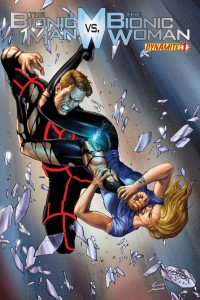 As someone who was young enough to have the battery of Six Million Dollar Man toys as a kid – somewhere there exists an eight-track recording of me squealing with glee over my Maskatron Christmas gift that would earn me a scornful beating at my local dive bar – I reacted enthusiastically over the original, Kevin Smith plotted The Bionic Man series from Dynamite. As a modernization of Steve Austin’s origin story, which I still maintain is one of the classics of the sci-fi superhero genre, it was exciting and interesting while hitting all the old notes from the TV show that I loved so much as a your child.
As someone who was young enough to have the battery of Six Million Dollar Man toys as a kid – somewhere there exists an eight-track recording of me squealing with glee over my Maskatron Christmas gift that would earn me a scornful beating at my local dive bar – I reacted enthusiastically over the original, Kevin Smith plotted The Bionic Man series from Dynamite. As a modernization of Steve Austin’s origin story, which I still maintain is one of the classics of the sci-fi superhero genre, it was exciting and interesting while hitting all the old notes from the TV show that I loved so much as a your child.
The problems has been that you only get to tell an origin story once, unless you’re DC Comics. Since the opening arc, I’ve found that The Bionic Man has floundered by, well, trying to modernize more of the old Six Million Dollar Man story elements. Specifically, Bigfoot. Yes, there has been a lot of Bionic Bigfoot in The Bionic Man in recent months, and I’m sorry, but it’s not 1977 anymore. If you’re gonna have a Bigfoot in a story and it doesn’t pop the head off that hick in the “Gone Squatchin'” hat that I cackle at every week on The Soup, you’re missing the only opportunity that makes any sense for Bigfoot in 2013.
Because the problem endemic to any superhero story is that, eventually, that hero needs a superpowered villain to fight. And if it’s 1978 and you only have a TV-level special effects budget, sure: why not Bigfoot? He’s a gorilla suit with some wires sticking out of it. But these are comic books, with an unlimited special effects slush fund, so to force these characters to battle the bad guys whipped up by people who thought that wide polyester lapels and disco were good ideas has just left me cold.
So enter Dynamite’s The Bionic Man Vs. The Bionic Woman miniseries, where writer Keith Champagne takes the obvious choice for a superpowered antagonist and apparently embraces the old superhero comic trope of heroes fighting before joining forces… maybe. It’s too early to tell how the two characters, who never meet in the first issue, will interact, but at least there’s no arbitrary threat with bionics slapped into it for them to fight, right?
Right?
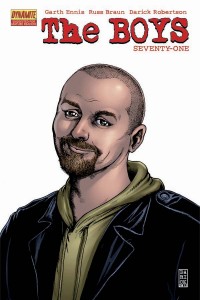
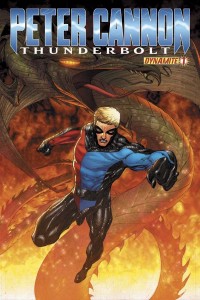
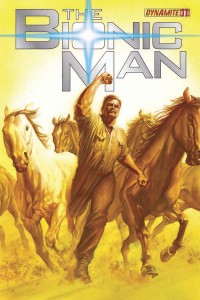
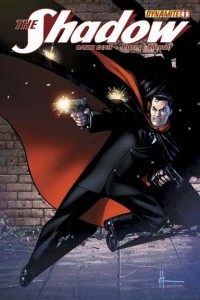
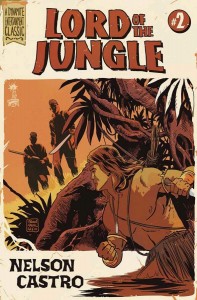
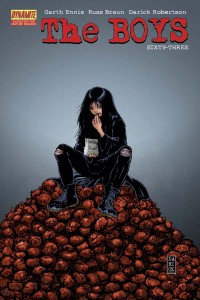
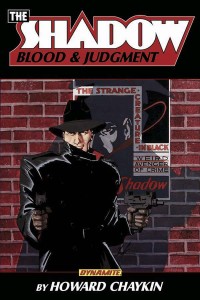
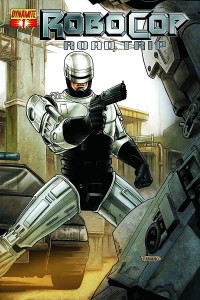
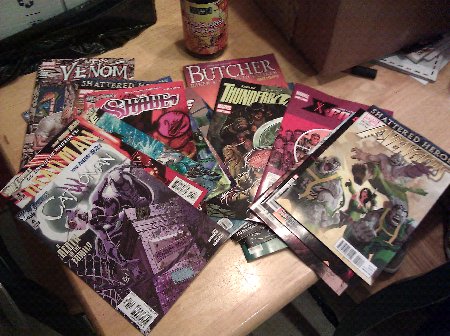
 Podcast RSS Feed
Podcast RSS Feed iTunes
iTunes Google Play
Google Play Stitcher
Stitcher TuneIn Radio
TuneIn Radio Android
Android Miro Media Player
Miro Media Player Comics Podcast Network
Comics Podcast Network